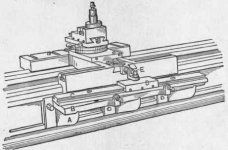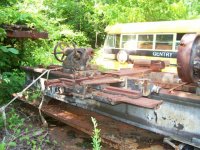Hi,
If you were building it from scratch (a) which design would you pick and (b) which design would offer the best results in terms of the tapers being cut?
Design #1 is the one that attaches to the bed.

Design #2 is the one that attaches to the saddle.

This is for a 14"x40" 2500 lbs lathe. The tools I have are a CNC mill with a 20"x18" envelope and a surface grinder with a 20"x6" envelope. I would probably build it off cold rolled stock 1/2" thick (cuz, why not)
Thoughts?
If you were building it from scratch (a) which design would you pick and (b) which design would offer the best results in terms of the tapers being cut?
Design #1 is the one that attaches to the bed.

Design #2 is the one that attaches to the saddle.

This is for a 14"x40" 2500 lbs lathe. The tools I have are a CNC mill with a 20"x18" envelope and a surface grinder with a 20"x6" envelope. I would probably build it off cold rolled stock 1/2" thick (cuz, why not)
Thoughts?



